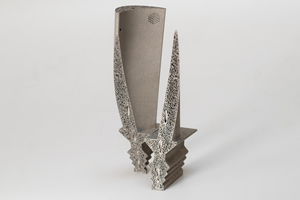The future of additive manufacturing is all about design
 Sarat Babu for The Engineer: We’ve come a long way to unlocking the value of additive manufacturing (AM) and established AM sectors like aerospace and medical have played a key role in achieving this by advancing the technology to meet their needs.
Sarat Babu for The Engineer: We’ve come a long way to unlocking the value of additive manufacturing (AM) and established AM sectors like aerospace and medical have played a key role in achieving this by advancing the technology to meet their needs.
You can now build complete full-sized, complex aero or medical parts in one go using AM, reducing the timescales and materials costs over more traditional design and engineering processes. This evolution is now helping to drive new designs and innovations in these sectors and while it is a laudable achievement, we now need to look beyond these traditional, ‘legacy’ sectors to ensure the importance of additive manufacturing technology.
In consumer-focused industries – such as sports equipment and consumer electronics – additive manufacturing is still nascent and finding applications that maximise the value of the technology can be a major challenge. While a focus on developing new AM technologies is important, understanding what novel things we can do with the technology is just as critical and often overlooked.
This is precisely why AM needs to stop focusing solely on technology and start thinking more about design. Full Article:
Comments (0)
This post does not have any comments. Be the first to leave a comment below.
Featured Product

